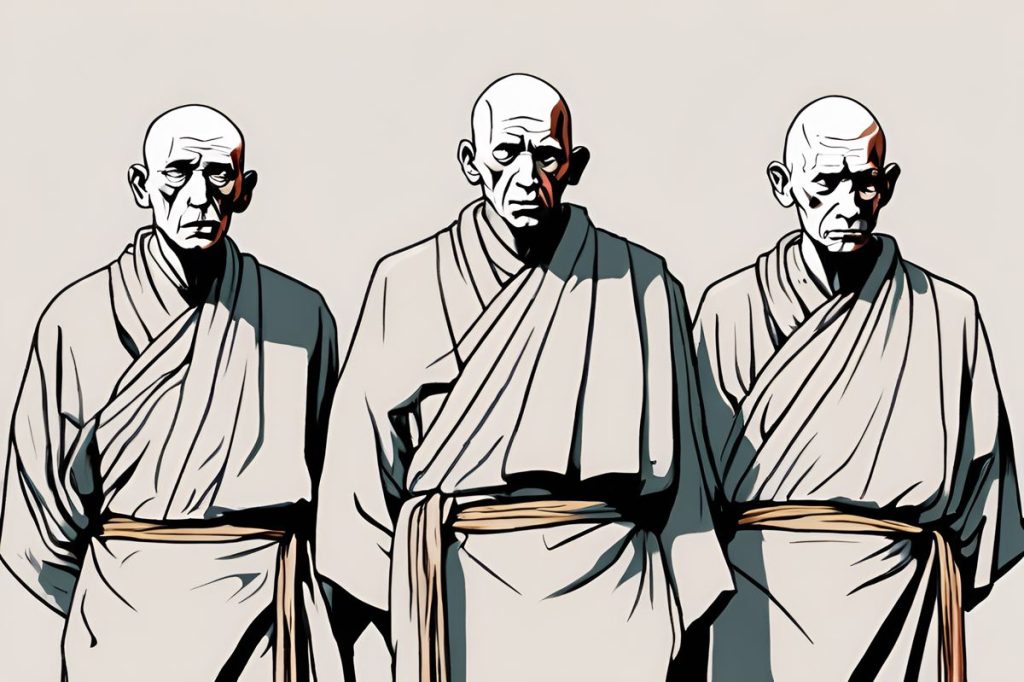Three monks from the Osiou Avakoum monastery are embroiled in a shocking scandal involving allegations of financial and sexual misconduct, including videos capturing illicit acts within the monastery. As they face an ecclesiastical court without legal representation, the case raises urgent questions about the balance between religious authority and secular justice, captivating both the faithful and the broader public.
What are the allegations against the monks at Osiou Avakoum monastery?
- The monks at Osiou Avakoum monastery face allegations of financial and sexual misconduct.
- Accusations include videos capturing sexual acts within the monastery and significant financial irregularities.
- The case has sparked discussions on the balance between ecclesiastical authority and secular jurisdictions.
Unrepresented and Under Scrutiny
At the heart of a scandal blending financial misconduct with allegations of sexual impropriety, three monks stood before the Ecclesiastical Court on a fateful Monday. Emblematic of their ongoing ordeal, they found themselves without legal representation. Andreas Vavouskos, who intended to represent them, was barred from the courtroom but didn’t leave without a statement. He announced to the media that the monks had prepared a substantial defense, submitting 24 objections to the court. In a surprising twist, their defense list includes prominent religious figures – the Archbishop and the bishop of Morphou.
The allegations are serious and multifaceted. Originally stemming from videos that allegedly captured sexual acts occurring within the Osiou Avakoum monastery’s sacred walls, the monks are also implicated in financial scandals. The exact nature of these financial irregularities has not been disclosed to the public, but they are significant enough to draw the attention of religious and legal authorities alike.
The Tension between Secular and Ecclesiastical Jurisdictions
This case highlights the complex relationship between civil law and ecclesiastical authority. Typically, religious institutions handle internal matters according to their own canonical laws. However, when accusations spill into the public domain, especially those of a criminal nature, secular courts can become involved. The balancing act between respecting religious autonomy and ensuring justice through civil means is delicate and often fraught with tension.
While the monks’ decision to represent themselves—or their struggle to secure representation—speaks volumes about the case’s uniqueness, it also underscores the gravity of their situation. The defense’s tactic to call upon higher-ranking church officials as witnesses may be part of a strategy to affirm their standing within the religious community or to question the credibility of the accusations.
The Monastery’s Sacred Trust and Public Interest
Monasteries are places of faith and reflection, where communities trust monks to uphold the highest moral and ethical standards. As such, allegations of misconduct within these sacred halls resonate profoundly with the faithful and the general public. The monastery in question, Osiou Avakoum, is no exception, and the scandal has likely sent ripples through its community of believers.
The public interest in the case is understandable. The monks’ actions, as portrayed in the media, strike at the trust placed in religious figures, and the issues at hand transcend the boundaries of the monastery. The implications of such allegations could lead to a reevaluation of internal checks and balances within religious entities, prompting them to strengthen measures against potential misconduct.
A Continuing Saga
The scandal involving the three monks is but a chapter in a contentious narrative unfolding within the intersection of religious duty and personal conduct. What began as private indiscretions has evolved into a matter of public interest and ecclesiastical concern. As the court proceedings continue, observers and community members alike await further developments, hoping for transparency and justice.
While the monks navigate the complexities of their defense without legal counsel, the outcome of their trial will have lasting implications for how religious institutions handle allegations of misconduct. It serves as a reminder that even the most revered sanctuaries are not immune to human failings and the scrutiny of the law.
“`markdown
What are the allegations against the monks at Osiou Avakoum monastery?
The monks at Osiou Avakoum monastery face serious allegations of financial and sexual misconduct. These accusations include videos capturing sexual acts within the monastery and significant financial irregularities, prompting discussions about the balance between ecclesiastical authority and secular justice.
Why are the monks unrepresented in court?
The three monks are currently without legal representation as they face the Ecclesiastical Court. Andreas Vavouskos, who intended to represent them, was barred from the courtroom. Despite this, the monks have submitted a substantial defense with 24 objections to the court, which includes testimonies from prominent religious figures like the Archbishop and the bishop of Morphou.
How does this case highlight the tension between secular and ecclesiastical jurisdictions?
This case exemplifies the complex relationship between civil law and religious authority. Typically, religious institutions manage internal matters according to their own laws. However, when serious allegations such as these arise, secular courts may be compelled to become involved, creating a tension between respecting religious autonomy and ensuring justice through civil means.
What are the broader implications of the scandal for the monastery and the community?
Allegations of misconduct within the Osiou Avakoum monastery have significant repercussions for both the religious community and the public at large. Such scandals can undermine trust in religious figures, prompting a reevaluation of internal checks and balances within religious institutions. The outcome of this trial may lead to changes in how these organizations address misconduct, highlighting the need for greater accountability even in sacred spaces.
“`

